
Simon de Montfort, 6th Earl of Leicester, later sometimes referred to as Simon V de Montfort to distinguish him from his namesake relatives, was a nobleman of French origin and a member of the English peerage, who led the baronial opposition to the rule of King Henry III of England, culminating in the Second Barons' War. Following his initial victories over royal forces, he became de facto ruler of the country, and played a major role in the constitutional development of England.

The Parliament of England was the legislature of the Kingdom of England, existing from the early 14th century until 1707, when it united with the Parliament of Scotland to become the Parliament of Great Britain after the political union of England and Scotland created the Kingdom of Great Britain.

Viscount Hereford is the oldest and only extant viscountcy in the Peerage of England, making the holder the Premier Viscount of England. The title was created in 1550 for Walter Devereux, 10th Baron Ferrers of Chartley.
The title of Baron Grey of Codnor is a title in the peerage of England.

Baron Dudley is a title in the Peerage of England. It was created in circa 1440 for John Sutton, a soldier who served as Lord Lieutenant of Ireland. The title descended in the Sutton family until the 17th century when Frances Sutton, the heir apparent to the title, married Humble Ward, who, himself, was granted the title Baron Ward in 1644. Their heirs inherited both titles until 1740 when the differing rules of inheritance meant that the Barony of Dudley descended on Ferdinando Dudley Lea, who became the 11th Baron whilst the Barony of Ward went to John Ward, who later became 1st Viscount Dudley and Ward. On Ferdinando's death in 1757, the title fell into abeyance. The title was revived in 1916.
Baron Fauconberg is an hereditary title created twice in the Peerage of England.
Sir Robert de Ros was an English nobleman.
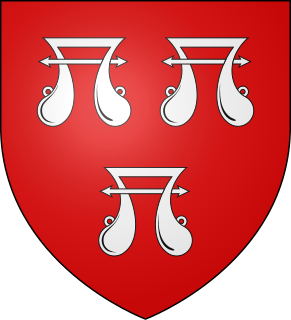
William Ros or Roos, 1st Baron Ros of Helmsley, was one of the claimants of the crown of Scotland in 1292 during the reign of Edward I.
Peter de Montfort of Beaudesert Castle was an English magnate, soldier and diplomat. He is the first person recorded as having presided over Parliament as a parlour or prolocutor, an office now known as Speaker of the House of Commons. He was one of those elected by the barons to represent them during the constitutional crisis with Henry III in 1258. He was later a leading supporter of Simon de Montfort, 6th Earl of Leicester, against the King. Both he and Simon de Montfort were slain at the Battle of Evesham on 4 August 1265.
The title Baron Ferrers of Chartley was created on 6 February 1299 for John de Ferrers, son of Robert de Ferrers, 6th Earl of Derby. The daughter of the 6th Baron Ferrers of Chartley, Anne, married Walter Devereux who was summoned to parliament as Lord Ferrers in her right. Their descendants became Earls of Essex and the peerage was forfeited in 1601 on the attainder of Robert Devereux, 2nd Earl of Essex, but restored to his son Robert in 1604, on whose death in 1646 the peerage fell into abeyance. The abeyance was terminated in 1677 when Robert Shirley, a grandson of one of the sisters of the 3rd Earl of Essex, was summoned as Lord Ferrers of Chartley with precedence to the original creation. In 1711, Shirley was created the 1st Earl Ferrers, but the Earldom and Barony separated at his death, the barony going to Elizabeth Shirley, the daughter of his eldest son, while the earldom went to his second son. On the 1741 death of Elizabeth Shirley, 15th Baroness Ferrers of Chartley and wife of the Earl of Northampton, the peerage again briefly fell into an abeyance that was resolved in 1749 by the death of two of the three heiresses, leaving the surviving daughter, Charlotte Compton, wife of the Marquess Townshend, as 16th Baroness Ferrers of Chartley. The barony continued, merged with the marquessate, until the death of George Ferrars Townshend, 3rd Marquess Townshend in 1855, when it again fell into abeyance between his two sisters and their heirs. It remains in abeyance.
The title Baron Latimer or Latymer has been created, by the definitions of modern peerage law, four times in the Peerage of England. Of these, one was restored from abeyance in 1913; one is forfeit; the other two are dormant, although their heir is well known.
Baron Montfort is a title that has been created twice in British history. The first creation came in the Peerage of England when John de Montfort was summoned to parliament on 23 June 1295. In 1367 the title either became extinct or fell into abeyance on the death of the third Baron. The second creation came in the Peerage of Great Britain in 1741 when Henry Bromley was made Lord Montfort, Baron of Horseheath, in the County of Cambridge. He had previously represented Cambridgeshire in Parliament, as had his father John Bromley and grandfather John Bromley. Lord Montfort was succeeded by his only son, the second Baronet. He sat as Member of Parliament for the city of Cambridge. The title became extinct on the death of his son, the third Baron, in 1851.
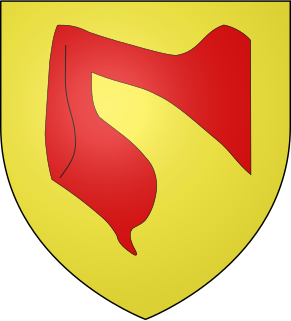
Henry de Hastings of Ashill, Norfolk, was a supporter of Simon de Montfort in his rebellion against King Henry III. He led the Londoners at the Battle of Lewes in 1264, where he was taken prisoner, and fought at the Battle of Evesham in 1265, where de Montfort was killed. He resisted King Henry III at Kenilworth and after the Dictum of Kenilworth he commanded the last remnants of the baronial party when they made their last stand in the Isle of Ely, but submitted to the king in July 1267. In 1264 he was created a supposed baron by de Montfort, which title had no legal validity following the suppression of the revolt.
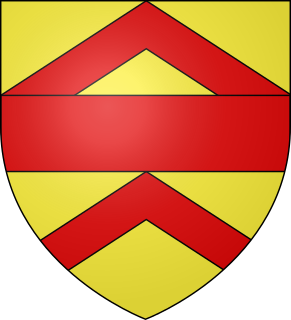
Robert FitzWalter, 1st Baron FitzWalter was an English peer.
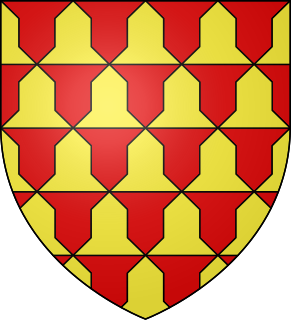
Robert de Ferrers, 6th Earl of Derby (1239–1279) was an English nobleman.
Events from the 1260s in England.

William II de Cantilupe, 2nd feudal baron of Eaton Bray in Bedfordshire, was an Anglo-Norman magnate.

There have been four different baronies held by the Marmion family, two feudal baronies, one purported barony created by Simon de Montfort and one barony by writ.
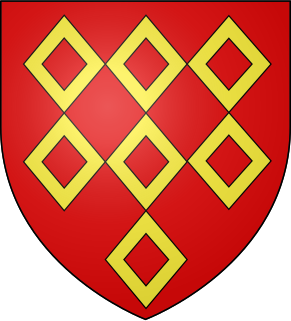
William Ferrers, 1st Baron Ferrers of Groby was an English peer who lived under two kings, Edward I and Edward II. His baronial caput was Groby in Leicestershire.

The Ferrers family were a noble Anglo-Norman family that crossed to England with the Norman Conquest and gave rise to a line that would hold the Earldom of Derby for six generations before losing it in rebellion. They also gave rise to several lines that held English peerages, the longest-living going extinct in the male line in the 15th century, as well as a Norman branch of the family that persisted into the 13th century. A French line persisted into the 16th century.













